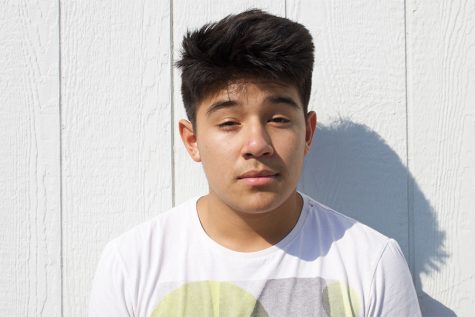Voter Intimidation Prevalent in 2016 Election
Polling station sign
November 14, 2016
As citizens began filing into lines at polling stations to vote for a hopeful candidate throughout the past week, they were all exercising one common freedom: the right to vote. The ability to cast a ballot is what defines a democratic government, and allows the people to decide the leaders of the country and the laws put forth, regardless of economic status or privilege. But in the current 2016 election, many voters seemed to feel their rights were being threatened through acts of voter intimidation, and these acts may have skewed the results seen on Election Day.
According to the American Civil Liberties Union, voter intimidation is when a person is “interfering or attempting to interfere with your right to vote, or with anyone else’s right to vote.” Under both federal and state laws, this action is illegal, and a citizen convicted of such a crime can face fines or up to a year of imprisonment. Many citizens, however, are disregarding the law and are doing what they deem as just to prevent a “rigged” election. At many of his rallies, the new president-elect Donald J. Trump encouraged many of his supporters to monitor certain polling places for voters that might “come in and vote five times.”
“You’ve been reading the same stories I’ve been reading, so go to your place and vote, and then go pick some other place and go sit there with your friends and make sure it’s on the up-and-up,” ThinkProgress.org reported that Trump said at a rally in Michigan.
Specifically targeting areas that have large populations of minority groups, many Trump supporters took his request to the extreme. Recently, a man carrying a 0.357 revolver was allegedly harassing a woman with her young son as they waited in line to cast their vote. The police had failed to intervene due to Virginia’s open-carry gun laws, and the man was technically not breaking any state laws. The mother, however, said she felt very intimidated speaking to an armed man who was pushing her to vote for the other candidate.
This has not been the only incident regarding voter intimidation.
A group referred to as the “Vote Protectors” visited polling places in nine different cities, where they conducted “fake polls” and videotaped voters in an effort to intimidate them. To seem like official monitors of the polls, the group went as far as to create fake ID badges.
A North Carolina voter took similar actions, in which he showed up to an early voting poll wearing a badge and started videotaping and photographing cars that were entering and leaving the polling site. The man was asked to leave by local officials.
On October 13, two Trump supporters carrying firearms stood outside the office of Jane Dittmar, a Virginia Democratic candidate for Congress. They stood in protest for almost 12 hours, with a message to other Trump supporters to stand up for what they believe in, despite possible persecution.
Forms of voter intimidation can also exist in social media. Ads that have been circulating on Twitter have claimed to allow citizens to vote via text message for presidential candidate Hilary Clinton, but the only accepted way to vote in the presidential election is through voting at official polling sites. Much of the material used for these tweets was used for Clinton’s campaign, and seemed to target certain populations, such as black or Hispanic voters, in an attempt to deceive them and take away potential votes for the Democratic Party.
Over the course of the campaign, citizens have noticed the significant increase in voter intimidation.
Democratic Party affiliate Ms. Leslie Wood, 42, said this increase could be correlated with many of Trump’s controversial statements throughout his campaign.
“I think part of it is that Trump says inflammatory things that make his supporters feel more justified in their racist or misogynist beliefs,” she said. Wood continued, reasoning that many of his supporters were participating in voter intimidation because they believed their candidate would not win without their help.
“They think they’re not going to win legitimately without bending the rules to help their candidate,” said Wood.
Others, however, seem to attribute this increase to the voters that are being intimidated.
“I don’t feel it’s right, but unfortunately, when people aren’t from this country, they’re easily intimidated,” said Republican Party affiliate Tina Moyer, 32. “People that are criminals are easily intimidated, and that just goes back to behavior science. I don’t feel it’s right, and the people that do it should be punished.”
Independent party voter Mr. Dave Hart, 38, instead placed the blame on the negativism surrounding the campaign between both parties.
“I think there’s probably a correlation between intimidation and negativity of the campaign,” he commented.
Many voters seemed scared to even exercise their right to vote. Ms. Marcia Beatriz, a Hillary supporter, was unsure about her own safety at the polls during this election because of prior statements made by radical groups throughout the Trump campaign.
“I’ve never been more scared to vote in my life,” she said. Beatriz explained that her expectations at the polls were thankfully not to her expectations. Instead, she was met with the discomfort of silence as she waited to cast her vote.
“I thought Trump supporters would be outside with torches. Instead, everything was very, very quiet at the polls.”
Almost all voters at the polls felt the pressure rising as they were in line to cast their vote. One of the only people at the polls who felt empowered and unafraid of the weight of her vote was Ms. Jannet McPherson, a Trump supporter.
“I didn’t feel pressured at all at the polls. I felt like the other Trump supporters supported me because they understand that Trump will be a good president and do good for the country,” she said.
Luckily, it appears that not many Prince George’s County polling sites experienced cases of voter intimidation. However, the question remains as to how can we decrease voter intimidation on a national scale for future elections, to ensure that everyone can fulfill their civic duty without feeling personally threatened. Suggestions among voters greatly differed.
“Maybe stiffen the penalties,” said Hart. “There needs to be more official security around the polling places.”
“I think that the candidates need to reach out to people who feel disaffected, and start addressing their concerns,” suggested Wood. “Part of the anger stems from people feeling like they’ve been ignored for decades.”
Republican Mr. Michael Urban, 52, took a more unconventional route and suggested the creation of two more main political parties within our multi-party system.
“Maybe go into a four party system, with a moderate democratic party and moderate republican party to combat the two extremes that seems to be on either side,” said Urban.





